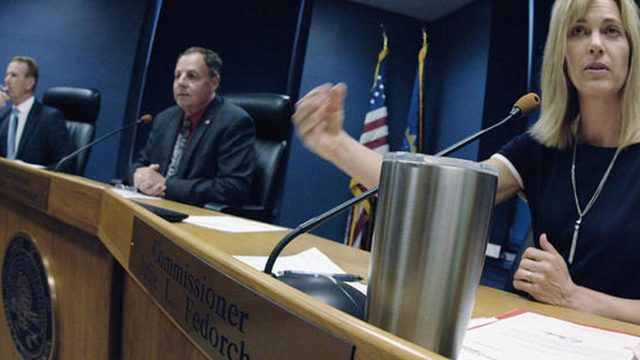Dakota Access Pipeline Expansion Expected to Bring in at Least $33 Million Per Year in Tax Revenues

Next week you’ll be hearing a lot about the Dakota Access Pipeline. As I mentioned in a post yesterday, the North Dakota Public Service Commission is putting on a meeting on Wednesday at the Emmons County Courthouse to hear public comment about a proposed expansion to the line.
The line can carry about 500,000 barrels per day. The expansion would more than double that capacity, up to about 1.1 million barrels per day.
DAPL enjoys very broad and public support among North Dakotans. Still, you can count on this expansion being hotly contested at the hearing by the ideologues and professional activists who oppose oil development (even as they all use petroleum products).
Yesterday I got curious about the potential fiscal impacts of expanding the pipeline, so I reached out to Tax Commissioner Ryan Rauschenberger and asked him about it.
[mks_pullquote align=”right” width=”300″ size=”24″ bg_color=”#ffffff” txt_color=”#000000″]”Today, approximately 300,000 barrels of oil are shipped out of state via rail,” Rauschenberger told me. “Once DAPL expands capacity, shifting those barrels from rail to pipeline will decrease shipping, generating an additional $33 million per year in oil tax.”[/mks_pullquote]
First, he noted that DAPL has already had a tremendous impact on state revenues. “Since DAPL went online in June 2017, ND has realized an estimated $263 million in additional oil tax revenue due to the decreased shipping cost and higher price received for oil,” Rauschenberger told me.
Keep in mind, those are just the revenues coming directly from the oil tax. Harder to quantify, but no less critical, is the impact beyond the direct oil tax. Expanded pipeline capacity in the state means expanded oilfield activity. Activity which drives revenue into state coffers through sales taxes, income taxes, etc.
I’m not sure how you could measure revenues from the activity which wouldn’t have taken place absent the pipeline, but it exists, and it matters too.
As for the expansion? “Today, approximately 300,000 barrels of oil are shipped out of state via rail,” Rauschenberger told me. “Once DAPL expands capacity, shifting those barrels from rail to pipeline will decrease shipping, generating an additional $33 million per year in oil tax.”
“This estimate is very conservative because as oil production expands, more oil can flow on the expanded pipeline instead of rail,” he added.
Again, there are positive impacts here which aren’t easily documented. Taking oil off the rails and putting it in pipelines means less chance of an incident. Pipelines aren’t perfect either, but they’re a lot safer than rail, and it’s not even close.
Also, pipelines are cheaper for oil companies. The whole point of drilling for oil is to get it out of the ground and to someplace where it can be sold and used. If oil companies can transport the oil to market more cheaply than they are now, that’s a cut to their overhead. That means they’re more resilient to the ups-and-downs of oil prices.
Next week, as the PSC holds its hearing, we’re going to be hearing a lot of sort of apocalyptic, doom-and-gloom rhetoric we’ve become accustomed to from the eco-zealots. The hearing is intended as a forum for reasonable objection and criticism, not trenched-in and obnoxious histrionics. I suspect we’re going to get more of the latter than the former, but either way, the fiscal and economic case for the pipeline expansion is sound.
Assuming the technical and safety considerations check out, and I have no reason to believe they won’t, North Dakotans should be able to enjoy this expansion as yet another step towards our state’s growing prosperity.




